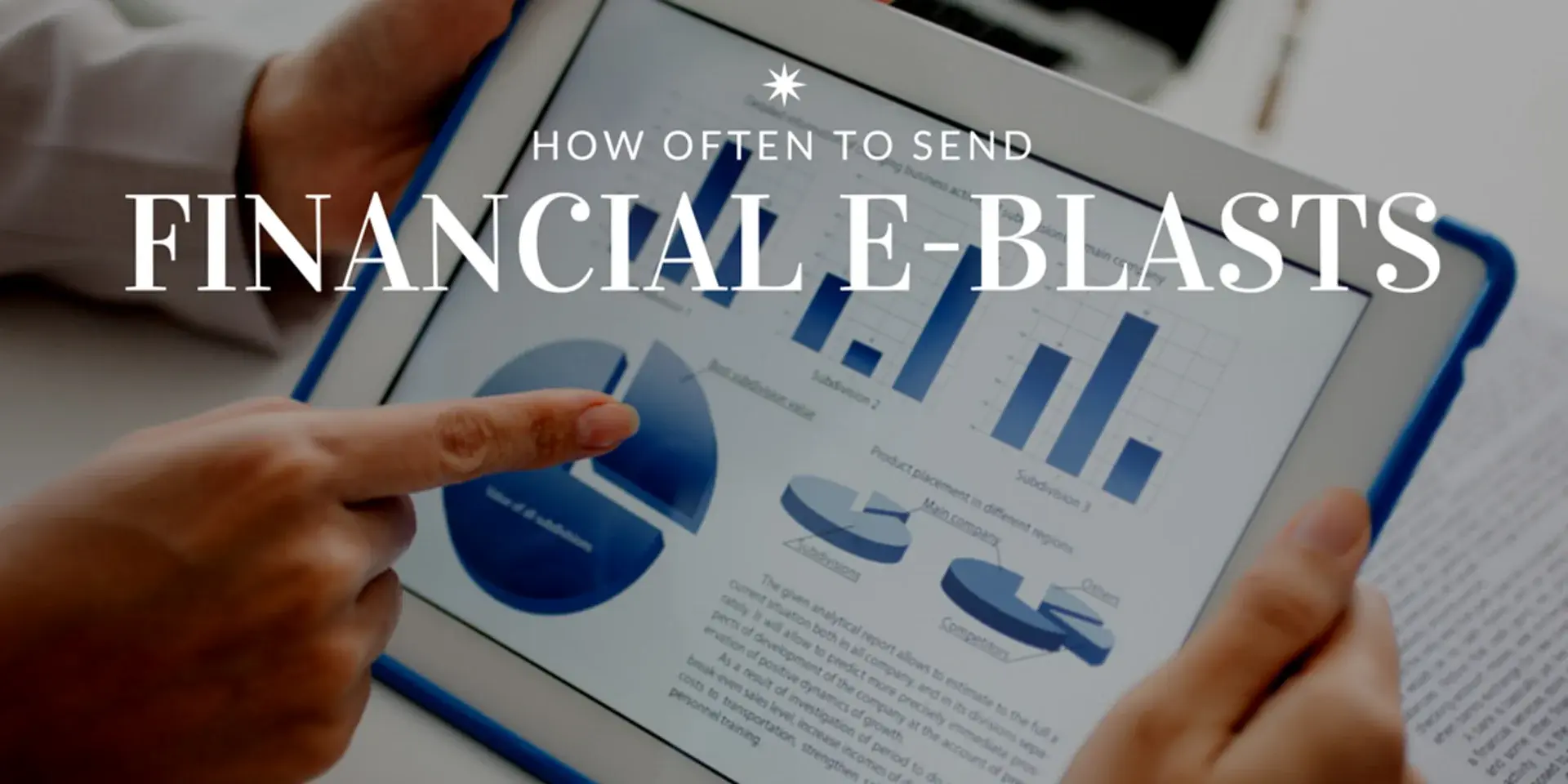 One of the key challenges of any email marketing effort is navigating that fine line between too little and too much contact with leads and customers. This challenge is even more acute in the financial sector, where marketers run a huge risk of coming across as over-eager, unprofessional, and simply annoying.
One of the key challenges of any email marketing effort is navigating that fine line between too little and too much contact with leads and customers. This challenge is even more acute in the financial sector, where marketers run a huge risk of coming across as over-eager, unprofessional, and simply annoying.
But let's get more specific. We recommend sending at least one financial eBlast a month and, at a maximum, one a week. Add it all up and you're looking at a maximum total of four per month, although the optimal balance is two per month, one every other week.
With that out of the way, we'd like to briefly articulate our reasoning. One study on eBlast analytics, called “View From the Inbox,” found that 73 percent of users who unsubscribe from an eBlast list do because of “too many emails.” This makes perfect sense. You yourself probably subscribe to email lists, and we'd venture to guess you'd opt out if your inbox was flooded with eBlasts three times a week — unless, of course, the content was out-of-this-world (which we'll get to in a second).
Therefore, don't run the risk of over-saturating your eBlast lists. And don't just take our word for it. Research indicates that click-throughs and open rates both drop dramatically once you get more frequent than weekly.
Also consider your audience. As a financial services firm, your financial email marketing efforts will be targeted towards an intelligent, demanding, and — most importantly — time-pressed demographic. As a result, precision, and not frequency, should be key.
And by “precision” we mean a firm grasp of the fundamental components of a successful financial email marketing campaign: list segmentation, creating compelling content and offers aligned to the recipient's location in the purchasing funnel, adhering to the principles of effective copy and design, catchy subject lines, providing a strong call to action, and periodic A/B testing.
Without these fundamentals in place, the date and frequency of your eBlast is likely irrelevant, because as depressing as it sounds, no one will be reading them anyway.
What do you think? How often does your firm send out eBlasts? Have you found that sending out more than four a month has proven successful? What's the most important ingredient in a successful eBlast?





